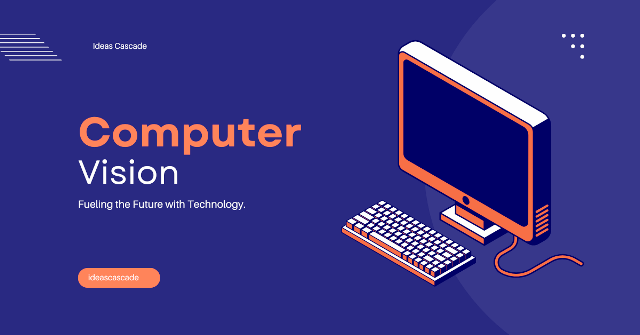Back in the 90s when the concept of artificial intelligence was introduced, researchers wanted to create machines that will perform like humans. They decided to attach a camera with a computer to make it explain whatever it caught sight of, calling it computer vision.
What is computer vision?
Computer vision is a part of computer science in which artificial neural networks (ANN) and machine learning are used to focus on permitting the PCs, systems, mainframes and super computers to identify visual inputs like images and videos to imitate human abilities and make sense of it.
It helps the system to obtain relevant information and to implement fixes on defects when they notice them. It works exactly like human works. In the same way, our eyes take a closer look at the thing and then send signals to our brains which change the data into meaningful information.
This technology grows rapidly. There are many companies that use computer vision to achieve diverse business consequences like optimised workflow, enhanced productivity, improved customer satisfaction and tough competition in the market.
Development of Computer Vision from 2010 onwards
| Years | Development |
2010 to 2015 | Algorithms of Deep learning were developed Convolutional Neural Networks (CNN) was introduced Computer vision was used in transportation for navigation |
2015 to 2020 | YOLO (you only look once) a popular Object detection algorithm was upgraded Face ID locks were introduced in mobiles Merging of systems of augmented reality and virtual reality in computer vision Computer vision helped in Diseases diagnosis |
2020 to 2025 | Computer vision is more rapidly growing in transportation and medical field also its extremely Useful in household smart Devices |
How Computer Vision works?
To give eyes to a computer, its vision needs lots of datasets. For instance, programmers need lots of images to recognise the features to enable a system for facial recognition. Now, artificial intelligence is helping agencies to recognise faces of criminals.
To obtain best out of the inputs, computers use two technologies; machine learning and neural networks.
Machine learning: It uses algorithm based models that allow systems to learn with the help of visual inputs. Before the analysis of data begins it goes through the cleansing process, distortion, and noises are removed. This analysis makes sure that the inputs are accurate.
This algorithm based models recognises common patterns, edges, textures to simplify data extraction. For example, if a system processes millions of dog images. The system will develop identity for the same patterns, shapes, figures which will be able to detect dogs in an image.
Convolutional Neural Networks (CNN): Somewhere you must have heard the word “pixel”. CNN uses labelling methods to categorise the data. It performs mathematical operations, examining images as pixels. Each pixel has its own label value.
Once the based models are trained, it becomes able to compare different things following their patterns, labels etc.
By combining all of these features the computer vision system understands distinct basic and complex images or videos. The growth in this technology has increased significantly.
Examples of Computer Vision
Here are some of its most common examples.
Google Translate
We all know what it actually is! Google Translate currently supports over 133 different languages. But what we don’t know is that it also uses computer vision techniques. It can translate one word into any other language but it can also change the complete language of a whole website.
It works simply, we input the word or sentence. Language detectors immediately detect the language and convert it into the target language. It breaks the language barrier by allowing everyone to use it for free.
Autonomous Vehicles
You must have known them as self-driving cars. As their name suggests that these cars do not need any human driver, it uses sensors, GPS and computer vision to navigate traffic patterns. These vehicles have cameras which capture the surroundings whereas the deep learning algorithms detect the object like other vehicles or traffic signals. It is an excellent innovation especially for disabled people as well as it responds more quickly than humans in emergency conditions.
Facial Recognition
These days each and every person has a smartphone especially with fingerprints and face locks. Computer Vision is also used here. It has improved security and prevented unauthorized access to our personal data.
On the other hand facial recognition is also used in many other forms. For example it is used to diagnose diseases more likely neurological and genetic disorders.
It is also very helpful in law enforcement, for finding missing persons, and recognizing the suspects.
Smart Homes
In movies or dramas you must have seen cleaning robots, Alexa or Siri etc. These are smart automation systems that allow homeowners to monitor their homes even when they are outside. Smart homes have many different components, most important components are following;
- Hub: it is the center of the control system. All other smart devices are connected with it. It allows the owner To have remote control of the whole house in one place.
- Sensors: Like we humans have senses with which we feel temperatures, notice things or hear. Similarly smart homes have sensors that measure and control the light, temperature and humidity of the house.
- Actuators: These are also like automatic detectors. They lock the doors automatically or whenever they detect a person’s presence they automatically turn the lights on. They optimise energy consumption by turning the unnecessary energy off.
Conclusion
Computer vision is a revolutionary technology which has a lot of different applications. In the coming years, it can become more accessible for homes as well as businesses. From healthcare to industries, entertainment to trades it holds the capability of reshaping our future. Businesses which hold the power of computer vision will be the future leader of industry.



